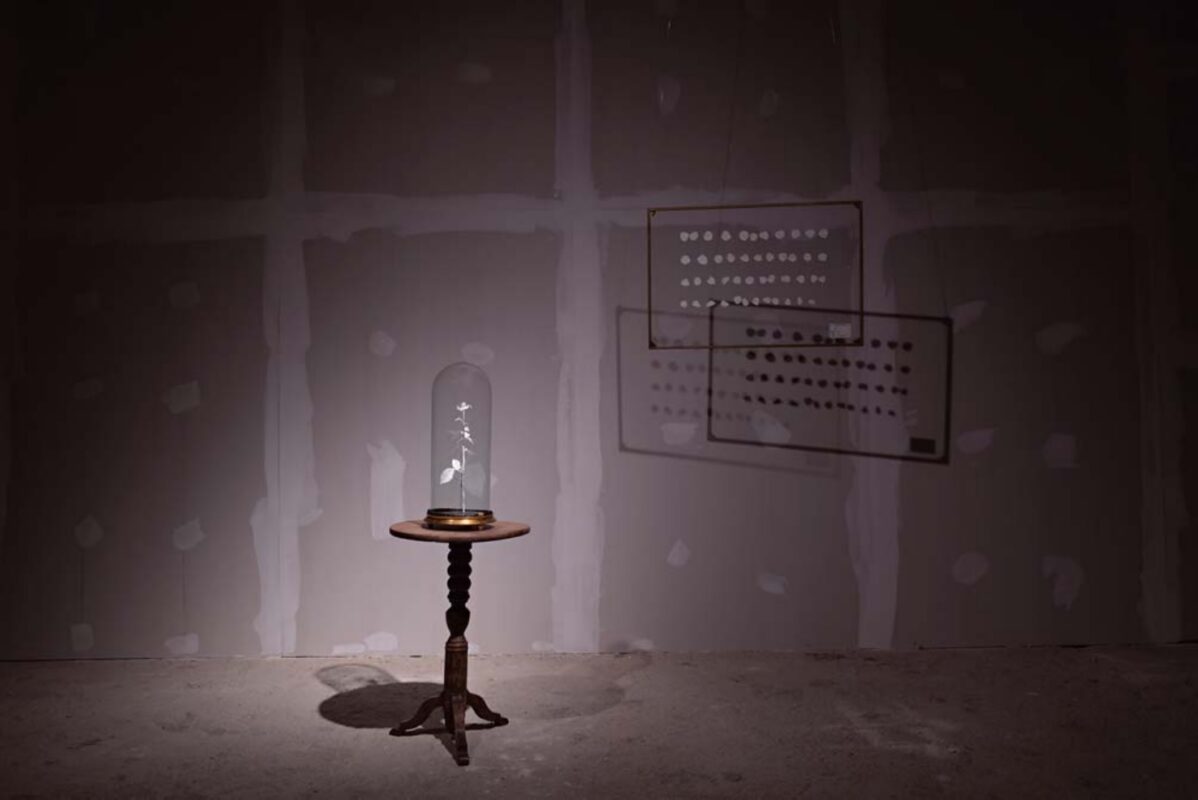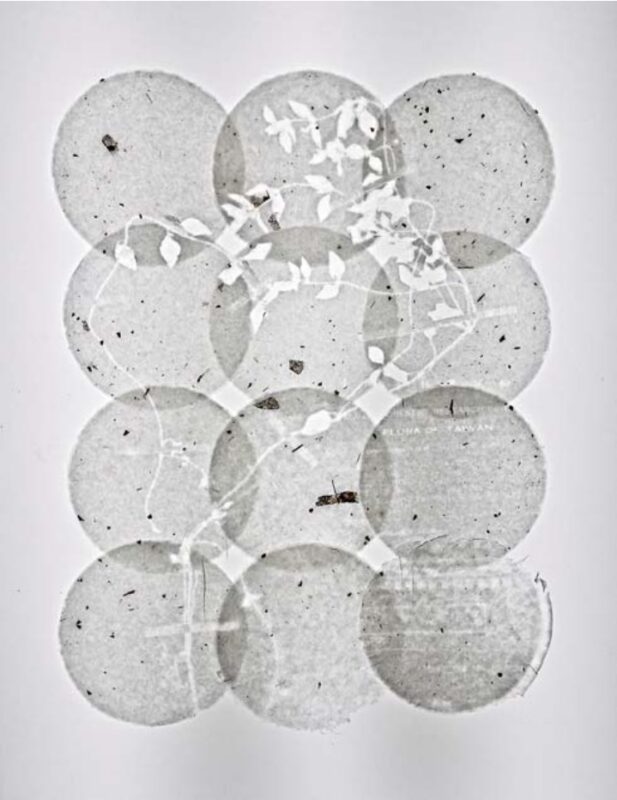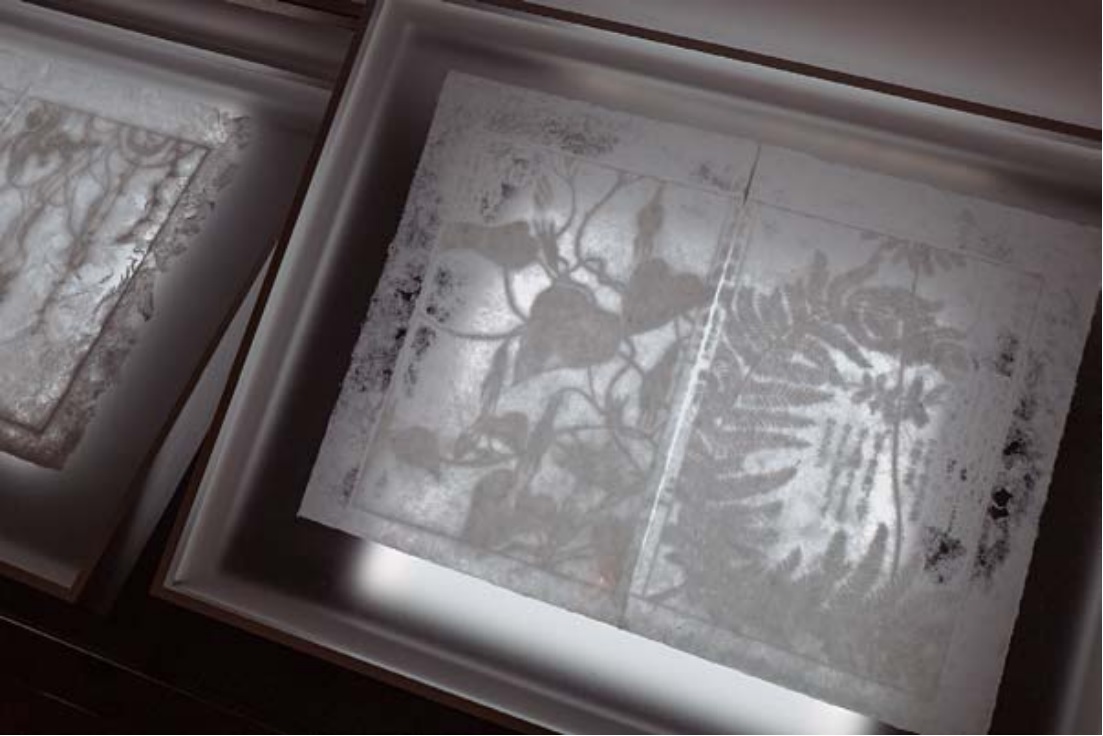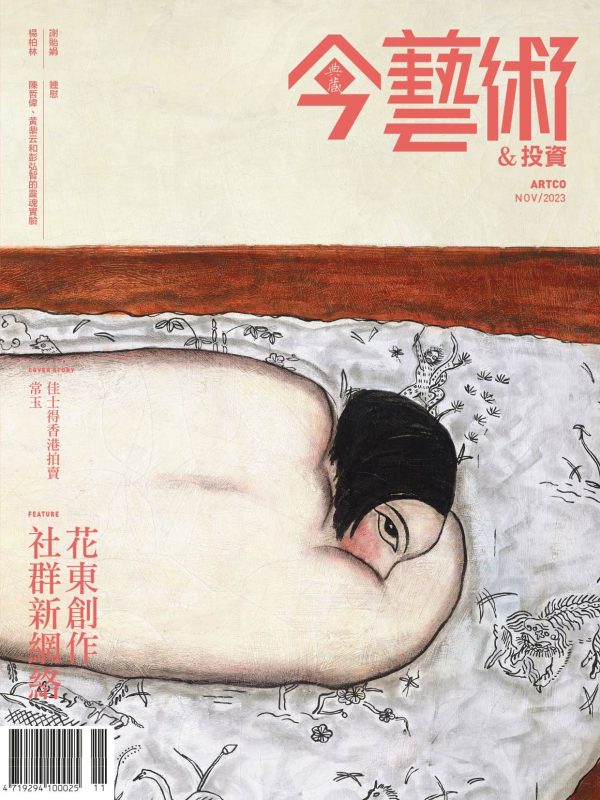
YANG Chung-Ming, “Flora of Formosa: B612 fig.1” 2023, Watermark, Handmade Paper
YANG Chung-Ming’s Imprint of the Heart
“Yet with plum rains the pigments dimmed, washing out Xu Xi’s falling ink blossoms.” As captured in Su Shi’s poem “Xu Xi’s Apricot Blossoms“, the concept of “falling ink” becomes the essential mechanism through which imagery and meaning are conveyed onto paper. The question then arises: how does one express myriad phenomena without ink? This forms the basis for an artistic practice steeped in technical innovation and conceptual reinvention. It entails mastery and rebellion against traditional methods and materials, as well as a redefinition of visual art genres. To appreciate “Flora of Formosa: YANG Chung-Ming Solo Exhibition” through the lens of “inkless” practice, the viewer is drawn not only to its delicate, dreamlike elegance and masterful craftsmanship, nor simply to the introspective presence of the artist himself—but to his contemplation and transcendence of the very essence of “printmaking.”
One of YANG Chung-Ming’s enduring creative inquiries is how to rearticulate tradition in a contemporary context. Printmaking, with its deep historical roots, found a new path when the artist, through a commission from the National Palace Museum in 2015, gained privileged access to its vast archives. It was then that YANG became intrigued by “Gonghua (Traditional Embossing),” a printmaking technique that flourished during the Ming and Qing dynasties but has since faded from use. Gonghua involves creating raised or sunken designs via carved blocks without applying ink, producing a relief effect and enhancing visual depth—akin to modern embossing. As a technique that highlights visibility through invisibility, embossing embodies an aesthetic aligned with Zen philosophy: though “formless,” its imagery is revealed in clarity. Beginning from this inkless approach, YANG redefined printmaking through material and technical innovation.

YANG Chung-Ming, “Flora of Formosa: Planty Voice fig.2” 2023, Watermark, Handmade Paper
Through his exploration of embossing and his encounter with Dr. SHYU Jiann-Gwo of the Taiwan Forestry Research Institute—an expert in fiber, papermaking, and mounting—YANG began moving from “inkless” embossing to watermark papermaking. Their collaboration began with handcrafted paper techniques, yielding initial results that, while promising, left something incomplete. In 2019, Dr. SHYU proposed a deeper collaboration and exhibition, marking the start of a five-year experimental journey from pulp to art. Their efforts sought to create tonal gradients from variations in paper thickness alone—rendering delicate fonts, torn butterfly wings, and withered roses without a single drop of ink.
In this transformation, the traditional elements of printmaking—plate, ink, and paper—merged entirely into the varying densities of paper fiber. The paper, once merely a substrate, now became the artwork itself. YANG deconstructed the structural logic of printmaking. Thus, “when flowers fall on blank paper, shadows take form in ripples.” Inkless became “formless” through the marriage of plate-making principles and hand-papermaking processes. The artist retrieved fleeting memories from flowing water and drifting shadows, gathering glimmers from the currents of pulp fiber. Perhaps it was this flux—both fluid and ephemeral—that deepened his connection to the “Honzo Zufu”, the most comprehensive collection of botanical illustrations preserved by the Forestry Research Institute. Compiled by Japanese herbalist Iwasaki Tsunemasa in 1828, this 95-volume masterpiece features 2,000 medicinal species, rendered not only with precision but also with the multiblock woodcut printing technique of Edo-period ukiyo-e—signifying both scientific rigor and the peak of printmaking craftsmanship.

YANG Chung-Ming, “Flora of Formosa: Timeless Narrative: Walking Through the 1828” (Single Page), 2023, Watermark, Handmade Paper
To retrieve the past imprints and herbal memories embedded in the “Honzo Zufu”, YANG fused his emotional resonance with the exhibition’s original intent—re-presenting national treasures in new light. His “Flora of Formosa” evolved through this exploration: curated selections from the manual, simulated conservatory images, butterflies posed like mounted specimens, and preserved rose petals—all frozen moments and fleeting lives deliberately framed within laboratory-like dimensions and processes. Here, the synthesis of art and science transcends visual presentation or technical method. It becomes a dialogue—an inspiration to push the boundaries between imagination and experimentation.

| Source |
Publication | ARTCO Monthly
Note | November 2023 / p.93
Text | Chu Yi-An
Images | Gallery de sol



 中文
中文